WordPress informed the other day that I had been posting this blog for two years. So in two years and 50 plus articles here are some things I have learned and some other interesting facts I have picked up over the years.
That:
George Stewart had more cars than I thought. He also had an older brother that served in World War One and moved to Corner Brook.
That Harry Chow came from the area around Canton China (present day Guangzhou) , just like most of the early Chinese immigrants to Newfoundland. And big surprise…His name wasn’t always Harry Chow.
That the mill smokestack was built in 1924 and I still cannot find its exact height.

That the AND Company mortgaged some of its early tractors to contracts who paid them in deductions from wood that was delivered.
That Southern Harbour Placentia Bay was a prospective winter shipping port for the AND Company. Nothing ever became of it even though they had acquired land and a right of way.
That the idea for the Botwood Railway came from the Albert E. Reid Company not the AND Company. The AND Company was going to ship through Lewisporte.

That there existed for a number of years a Company known as the Bishop’s Falls Pulp and Paper Company. All of its directors were executives of the AND Company.
George Gibson who owned a farm near Corduroy Pond and also owned the King Edward Theater in Windsor until 1939.
That the AND Company only originally only acquired the part of Reid Block 59 on the North Side of the Exploits River. They acquired the rest in the 1920’s.
That people lived at Rushy Pond Siding (Waterchute) before anybody lived at Grand Falls or Windsor.
There was also a school at this same little community.
That seals were reported to be swimming near the Grand Falls by Howley in the 1860’s.
That the architect of the Grand Falls House was R. Douglas Wells.
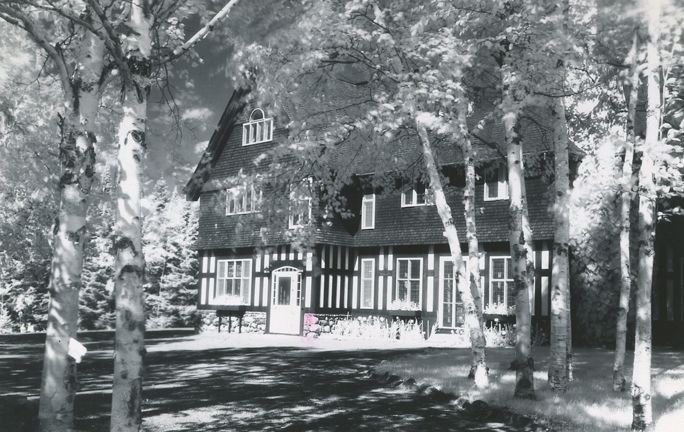
That number 1 paper machine was shipped to the West Indies in 1970.
When the AND Co bought number 7 steam engine it was about 37 years old! Steam engines last a lot longer than cars.
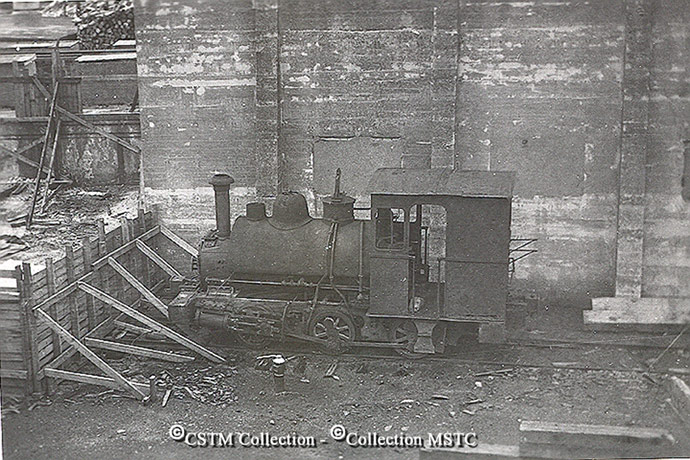
Much of number 7 engine was rebuilt after it was rescued from the mill scrap heap in the late 1970’s.
That the highway between Grand Falls and Badger was completed in 1936.
That NDA/St. Mike’s may have won more Jones’s Sheilds but GFA won the last one.
That there were at least two other clinics/hospitals before the Lady Northcliffe Hospital, one on Carmelite Road and the other somewhere on High Street.
That the AND bought several parcels of land back from people in the 1920’s and 30’s.
That the Royal stores operated until about 1977 and they were in Millertown right until the very end.
That there were close to ten tug boats that operated on Red Indian Lake over the years.
The one below was the first one.
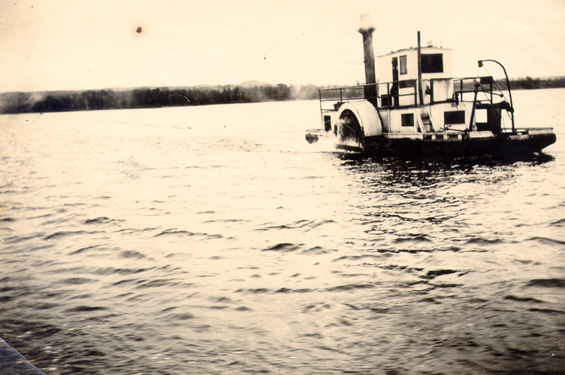
That the AND Company allowed Newfoundland Timber Estates to finish up there sawing for 1905 before they took over at Millertown. They operated there until October of 1905 which explains why some of the very early families didn’t come to Grand Falls until that fall-because the men worked for Newfoundland Timber Estates.
Many of the men in the picture below originally worked for Lewis Miller or Newfoundland Timber Estates.
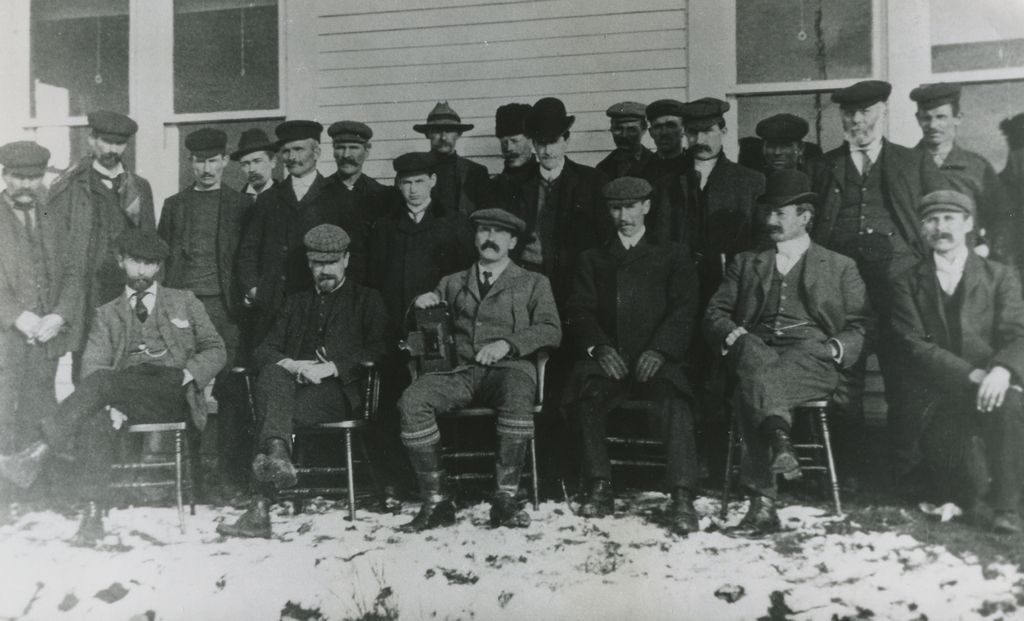
That Charlie Edwards operated the Popular Theater out of the Town Hall for about twenty years before building his own theatre.
That logger used to refer to sleeping on boughs as sleeping on “layers.”

That the logs from Lord Northcliffe’s log house may have been used to build the first Boy Scout hut and the windows ended up in a house on Junction Road.
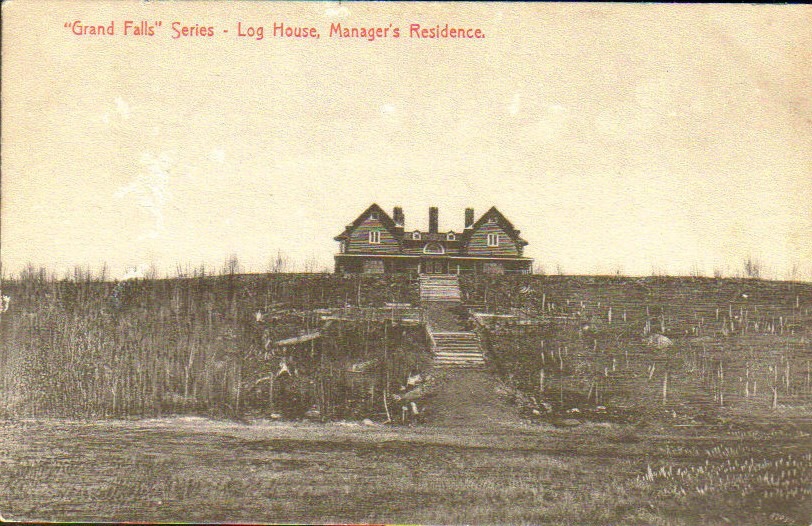
That Sir Vincent Jones lived for another twenty or more years after he left Grand Falls.
Philip Gruchy was the first general manager of the mill from Newfoundland and started with the AND Company in 1908.

Gruchy was also the first manager to live in the mill managers house on the grounds of the Grand Falls House.
The Grand Falls golf club had a twenty year history as a farm.
You can’t drive wood on Leech Brook, or at least it is not good for driving. A woods contractor sometime in the 1920’s or 30’s cut a bunch of wood with the intention of driving it down Leech Brook only to find it was nearly impossible to do so.
The bridge behind the mill was put across in 1961.
The original timber limits that supplied the Grand Falls mill were mostly around Red Indian Lake.
The mill at Bishop’s Falls was originally supposed to be much larger than the mill at Grand Falls.
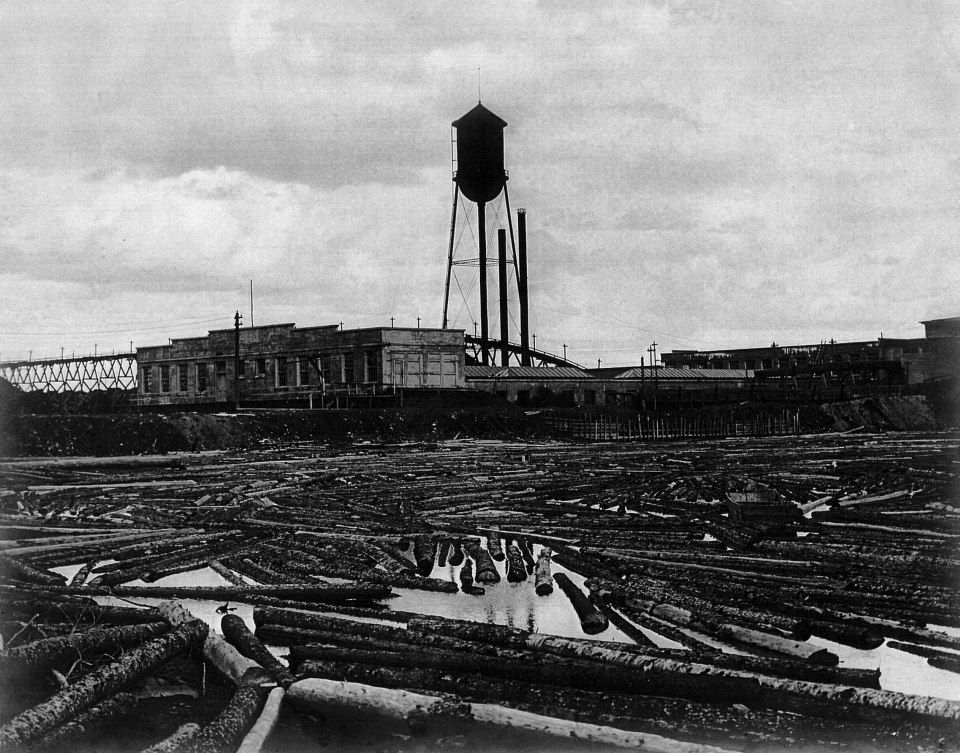
Joey Smallwood snuck into a picture as a workman while they were building the machine shed for “Moby Joe.”
An Artist by the name of Afonso Toft painted and exhibited a collection of paintings done around Central Newfoundland shortly after the First World War.
There may be a German 77mm artillery piece from WW1 buried somewhere around the Armories.
That there was a home guard unit of over 100 men recruited and based in Grand Falls during the Second World War. It was based at the old Lincoln Road GFA.
There used to be the hull of an old river tug boat near the Salmon Ladder.
Folklore sometimes mentions “French” loggers being in the Central Newfoundland area in the 1800’s. This is somewhat misleading there were a number of Quebecois lumbermen brought in by the company that operated a mill in Botwood in the 1890’s (Which was a Quebec company). There exact number is not known but fairly early on their ranks were filled with Newfoundlanders. One Quebecois camp foreman was a Mr. Lamotte who had a camp not far from Grand Falls around 1893.
By 1895 these loggers cutting pine had worked their way up as far as Twin Lakes.
The name Badger appears to be a misreading of Badger Brook’s original name “Ranger River.”
The AND Company once experimented with using reindeer for hauling wood and as a source of food for its logging camps.
Charlie Edwards survived 3 plus years in Japanese prisoner of war camps during World War Two.
There was once, in the very early days, a Chinese laundry on High Street.
The railway trestle at Bishop’s Falls is the third of its kind, the other two having been washed away by ice. The current trestle dates from 1901.
Bishop’s Falls was divisional headquarters for the Reid Newfoundland Railway and the site of the A.E Reed pulp mill. So before 1927 most people there worked for the Reed or Reid Company, which must have been confusing.
The Anglo-Newfoundland Development ceased to exist in name in 1965, although the merger with Price Brothers happened in 1961.
The Grand Falls Central Railway existed as an active company until the 1990’s.
McDonalds opened in Grand Falls in 1982.
The Exploits Valley Mall opened in 1974.
I don’t know how people survived but there wasn’t a Tim Hortons in Grand Falls-Windsor until the mid 1990’s!
There used to be a lot more gas stations in Grand Falls-Windsor.
There was once a Bowling ally where the Cathy Empress was located.
Ches Penny was one of the original owners of the current Bowling ally.
Grant’s Shoe store was once the Vogue Theatre.
The Vogue Theater was built by Jack Basha in the late 1940’s.
Jack Basha bought Baird’s Hotel in the late 1950’s and changed the name to the Town and Country Inn. It later became Jimi-Jaks.
Kelly’s Pub was once the Hillview Inn.
The Mount Peyton motel was for many years part of the Sim-Westco Hotel. It was owned by Wes Simms.
The Robin Hood in was originally Jackman’s Hotel, in 1975 it was sold and became the Car-Sans. In the early 1990’s it became the Robin Hood in when it was purchased by a family from Nottingham, England.
Captain Tom Dower was building a ship next to Kelly’s Pub back in the early 1990’s.
The gun in front of the Royal Canadian Legion was from the HMS Calypso, it is a 12 pounder naval gun.
Joe Hampton owned and operated the car ferry across the Exploit’s River near Bishop’s Falls.
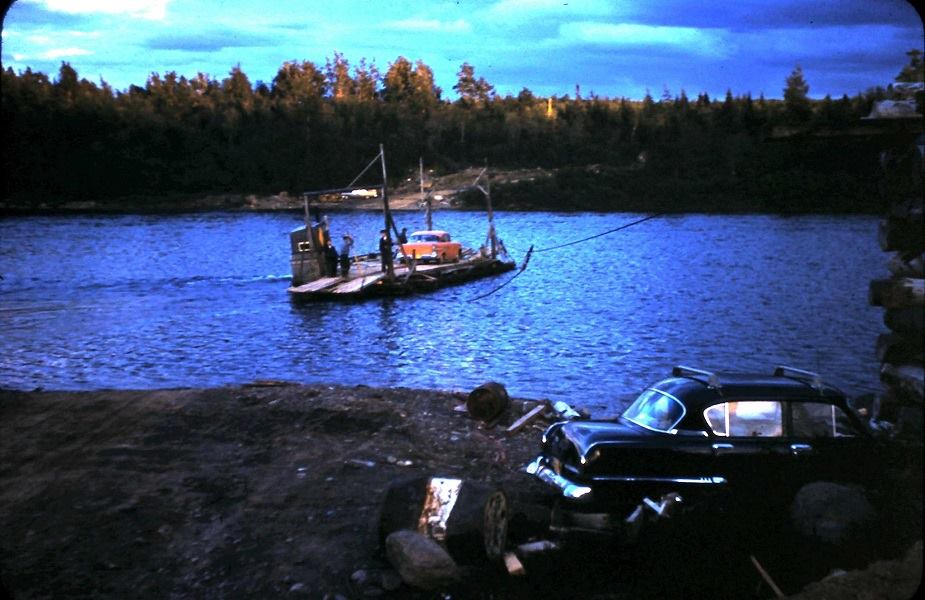
There were large sawmills at Glenwood, Norris Arm, Botwood, Point Leamington and Badger before Grand Falls started up.
People have lived at what is now Badger for over a thousand years including MicMac, Beothuk, Maritime Archaic Indians and Dorset Eskimos.
The last steam engine to operate in Newfoundland was on the Grand Falls Central Railway in 1958.
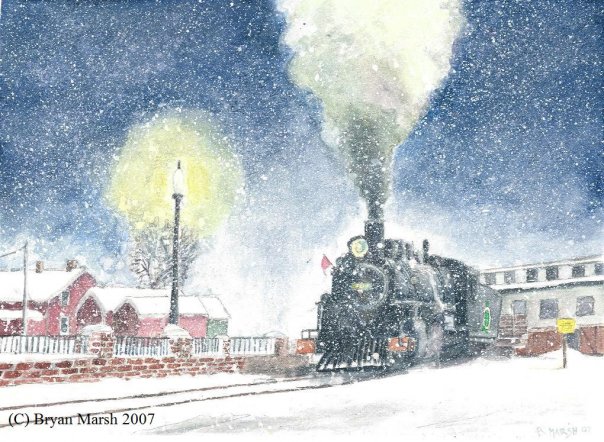
It took over 20 years to develop the Buchan’s Mine.
There was another mine besides Buchan’s in the interior central region, known as Gullbridge a copper/base metal mine operated at Gull Pond near Badger Lake in the 1960’s.
To the best of my knowledge only three people have been murdered in Grand Falls-Windsor in the past 111 years and two of those murders have taken place in the past 15 years.
The Royal Newfoundland constabulary was responsible for policing both Grand Falls and Windsor prior to 1949.
The jail was located in the old post office on High Street.
The old post office/Federal building on high street was torn down in 1968.
Stirling Thomas wasn’t born in Grand Falls or Windsor.
George Stewart was.
So was Gordon Pinsent.
The Grand Falls Stadium had the first artificial ice surface East of Montreal when it was built.
There was an ice rink on the same spot as the stadium for years before, it was housed in a wooden building.
For many years Church Road Park was a baseball field.
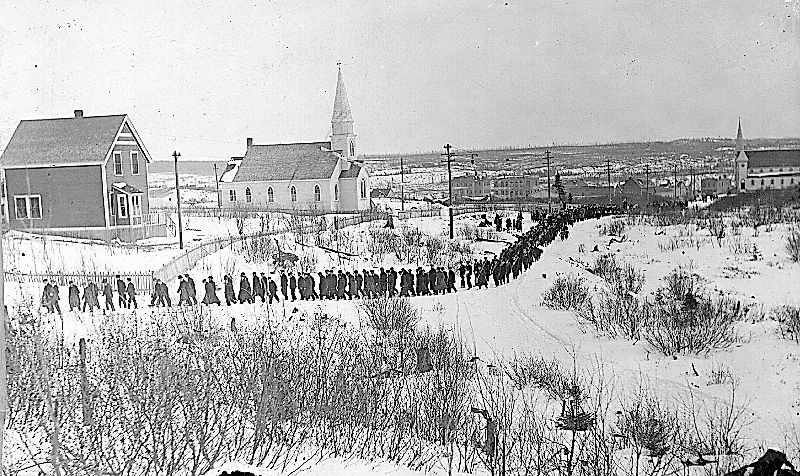
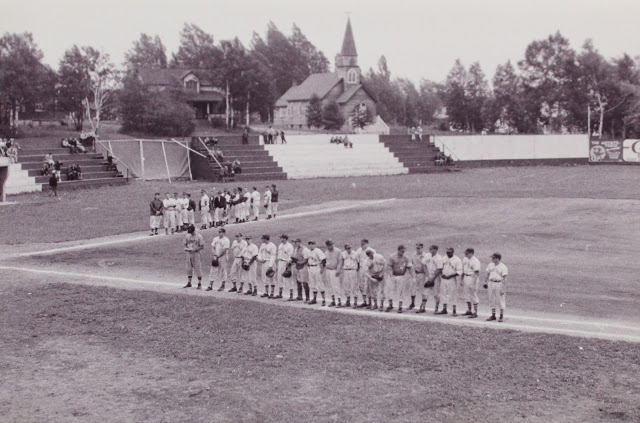
The area between the Grand Falls House and the Exploits river also was once site of an athletic field.

During World War Two and for a number of years after there was a United States Military repeater station (communications relay station) on Main Street Windsor, complete with a detachment of troops.
The Arts and Culture Center was part of the Czechoslovakian pavilion from Expo 67.
Famous aviator Sidney Cotton flew aerial surveys for the AND Company in the 1920’s.
The Beach Boys did not play at the Salmon Festival, they played a concert on Canada Day 1990.
The curling club is shaped like a barn because for many years it actually was a dairy barn.
The Anglo-Newfoundland Development Company donated much of the land used for Terra Nova National Park
Bob Hope was reported to have played at the Grand Falls Golf Course during WW2.
Tezers Lounge was originally an Anglican School, Church services were also held there.
One of the very first court cases under the Workmens compensation act of 1908 involved the A.N.D Company.
Correction on one comment——–The Mt. Peyton Motel co. Ltd. was never a part of the Sim-Westco and Wes Simms never had anything to do with the Mt. Peyton. Correction is submitted by Rod Baird son of the original owner Temple Baird.
LikeLike
I should have worded that better, but part of the Mount Peyton Motel was once part of the Simwestco, I believe part of it was torn down.
LikeLike
Bryan, thank you for this! A lot of information that I was unaware of about my hometown.
LikeLike
The first bowling alleys in Grand Falls was on High Street attached to the Town Club in 1940. The bowling alleys that were in the Cathy Empress building were these same four lanes removed from High Street in 1957. Mac Dalley from Botwood owned these lanes and ran them from late 1959 to 1963 when he shut down so he could run Lincoln Lanes owned by Ches Penney and Wm Toytman. Mac moved his lanes to the Botwood Stadium.
The first lanes in this area were on Bond Street in Windsor run by Harvey Bishop in 1930’s. Obediah Gill and Bill Hunt were pinboys and were paid $12 a month.
Thank you for all your hard work, great reading.
LikeLiked by 1 person
Thanks! I did know that Bill Toytman was part owner of Lincoln Lanes but he isn’t as well known as the other owner. I also believe there was a Bowling Ally at Gullbridge mines in the 1960’s.
LikeLike
Thank you for all of these pictures and facts about my home town. It was enjoyable experiencing it all over again. The baseball field on Church Road was still there when I left Grand Falls in 1964. Another piece of trivia – my father worked on the construction of the Grand Falls Stadium. He was a welder and welded a lot of the pipes under the ice surface. My mom would take me to the new rink, with her, when she’d deliver my dad’s lunch basket when he was working there. I’m guessing it was 1948-49.
LikeLike
My Grandfather worked on building the stadium too. He was a carpenter there I think it was in 1947.
LikeLike